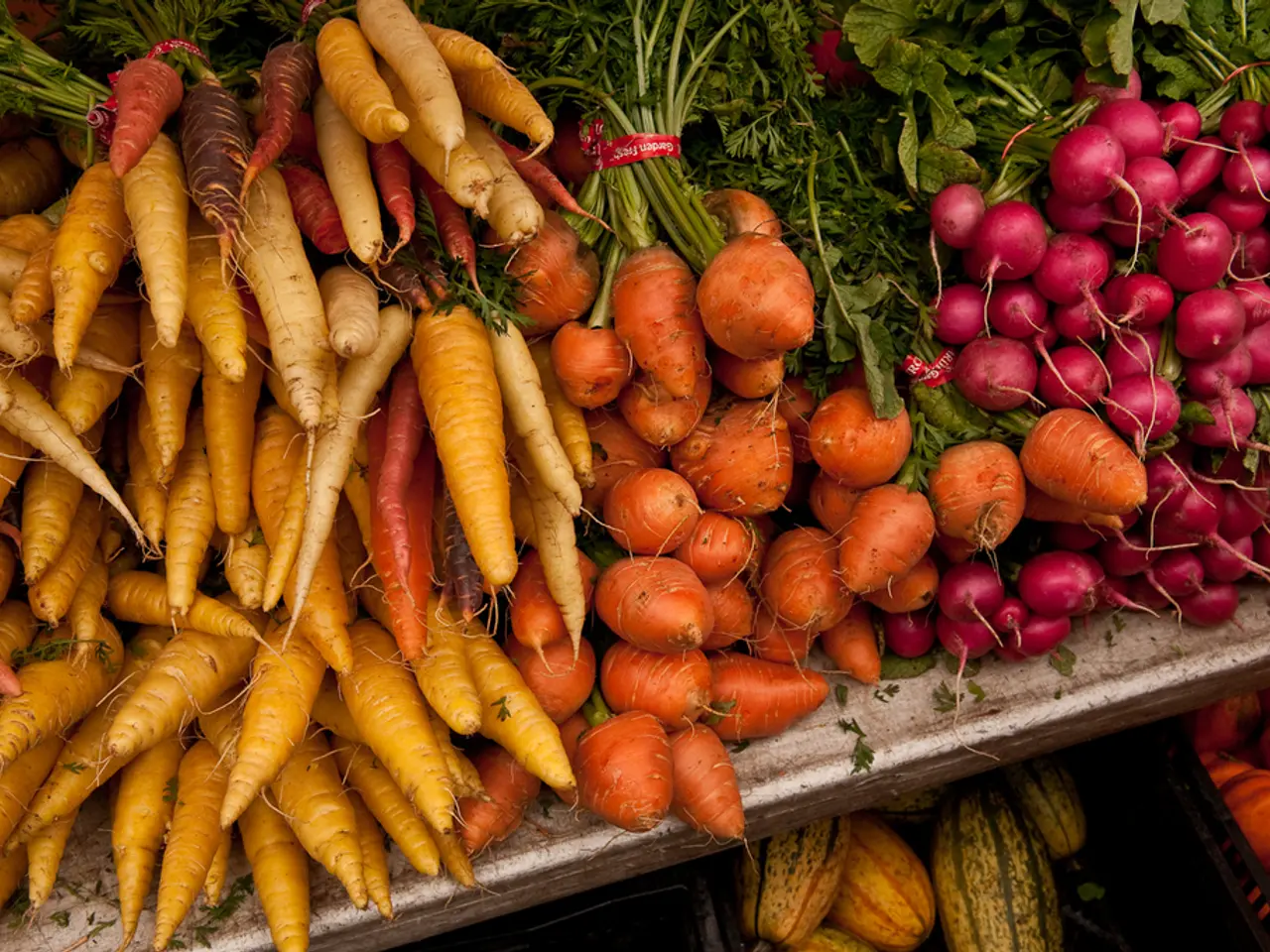Internal Voyage of Plant Nutrients
In the world of horticulture, the health of plants is closely tied to the nutrients found in the soil. Different elements play specific roles in plant growth, absorption, and transport. Here's an overview of these essential nutrients, categorised by their function.
### Macronutrients
1. **Nitrogen (N)** - Promotes rapid green leafy growth and overall vegetative development. An excess of nitrogen, however, can cause too much leafy growth at the expense of flowers or fruits.
2. **Phosphorus (P)** - Crucial for early root development, flowering, and energy transfer within the plant through ATP. Phosphorus deficiency can result in stunted growth and purplish leaf colour.
3. **Potassium (K)** - Enhances plant growth, water regulation, stress tolerance, and crop quality. A deficiency of potassium appears as yellowing or browning leaf edges and poor water use efficiency.
4. **Calcium (Ca)** - Essential for root formation, vigour, and cell wall structure. Calcium deficiency can cause blossom end rot in tomatoes and other growth issues.
5. **Magnesium (Mg)** - Integral to chlorophyll formation (hence photosynthesis) and phosphorus metabolism.
6. **Sulfur (S)** - Contributes to dark green leaf colour, seed production, and the formation of amino acids and vitamins.
### Micronutrients (Needed in tiny amounts but critical) - **Zinc (Zn)**: Important for enzyme functions and genetic transcription (reproduction). - **Sodium (Na)**: Involved in stomatal function, enzyme activity, water regulation, and leaf regeneration; both deficiency and excess are harmful.
### Other Nutrient Roles - **Carbon (C)** and **Hydrogen (H)**: Fundamental building blocks of plant organic molecules such as carbohydrates, proteins, nucleic acids, cellulose, and lignin. Carbon comes mainly from atmospheric CO2 absorbed through leaves, while hydrogen is mostly derived from water.
### Absorption and Transport - Nutrients are absorbed mainly through roots and transported via plant vascular tissues. - Microbial activity in soil plays a key role in nutrient cycling, decomposition, and solubilization, making nutrients available for plant uptake. - Soil factors such as pH, moisture, organic matter, and cation exchange capacity directly influence nutrient availability and absorption.
The presence of soil organic matter, for instance, improves soil structure, allowing water and air to move through the soil more easily, enhancing root growth and the absorption of nutrients by the roots. Soil biology also helps in mineralization, nitrogen fixation, and nutrient regulation, which are essential for maintaining soil fertility and promoting plant growth.
The pH of the soil plays a critical role in nutrient availability, affecting the form of nutrients and influencing their leaching capabilities and availability to plants. The nutrients required for plant growth can be divided into macronutrients and micronutrients. The three main macronutrients are nitrogen, phosphorus, and potassium (NPK).
Volatilization, the process by which excess nitrogen in the soil is converted into gaseous forms and lost to the atmosphere, helps to prevent the buildup of excessive nutrients in the soil. Different nutrients in soil serve specific functions and roles essential for plant growth, absorption, and transport.
In summary, macronutrients support vegetative and reproductive growth, energy transfer, water balance, and stress resilience; micronutrients assist enzyme functions and genetic processes; and elements like carbon and hydrogen form the fundamental organic framework of plants. Soil conditions and microbial activity are crucial for making these nutrients available and facilitating their uptake and transport within plants.
- Advances in science and health-and-wellness concepts increasingly recognize the importance of understanding soil health for sustained plant growth.
- In the realm of fitness-and-exercise and nutrition, maintaining a balance of essential soil nutrients equates to a healthy and thriving garden ecosystem.




